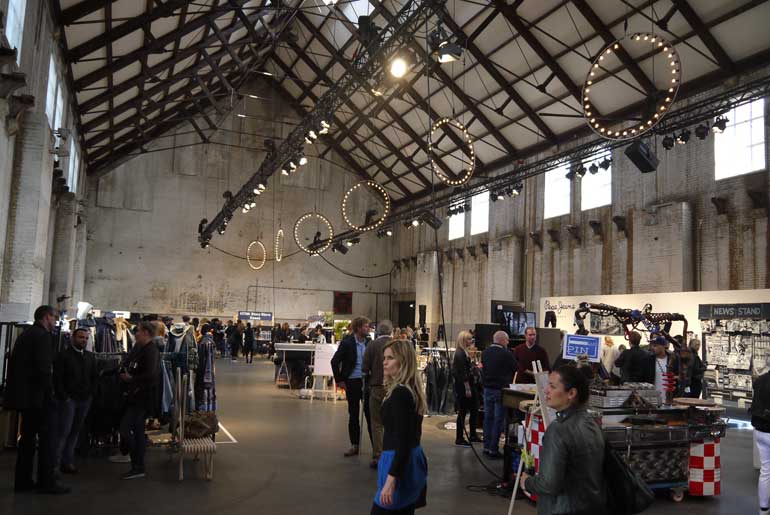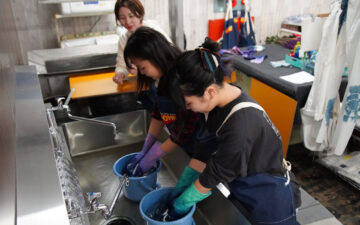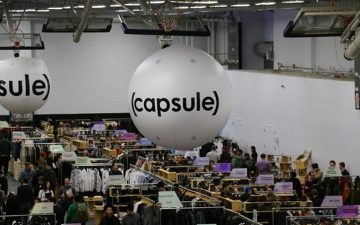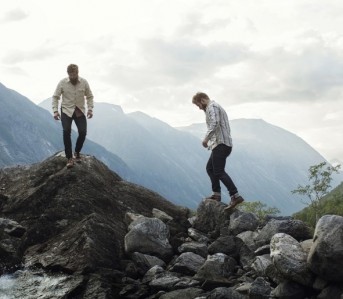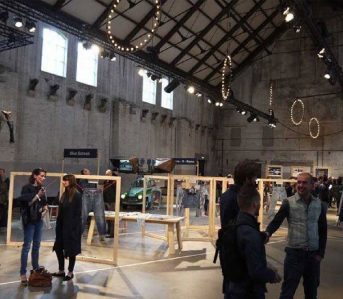Declaring any one city as “the capital of denim” is a bold statement to make. We don’t hear it thrown around too often, but when we do it’s typically mentioned in the same sentence as San Francisco and Tokyo. Strangely enough, despite the term “denim” deriving its origin from the old French town of Nîmes, we’ve yet to see any one European country or city step up to seize the title. Or at least that was the case up until three weeks ago, when Amsterdam officially made their claim with the inaugural Amsterdam Denim Days fair. On a per capita basis, the average Dutch consumer owns the most pairs of jeans in the world; 5-6 pairs to be exact.
In celebration of all things indigo and denim, manufacturers, makers, and mavens from around the globe descended upon the old Dutch capital from May 7th to 10th. The three-day event was largely spearheaded by local denim initiative, The House of Denim, but also created in collaboration with professional trade shows Kingpins and Modefabriek, local recruiting firm HTNK Fashion Recruitment & Consultancy, and city government I Amsterdam.
Regardless of how passive your interest or deep your experience in denim, there was a little of something for everyone. The Kingpins trade show was tailored to professional designers and makers, Modefabriek Blueprint exhibition towards denim consumers and enthusiasts, and a range of other denim activities and happenings took place over the three days in the Venice of the North.
In the span of 72 hours, we were fortunate enough to partake in a variety of these segments and more.
Kingpins
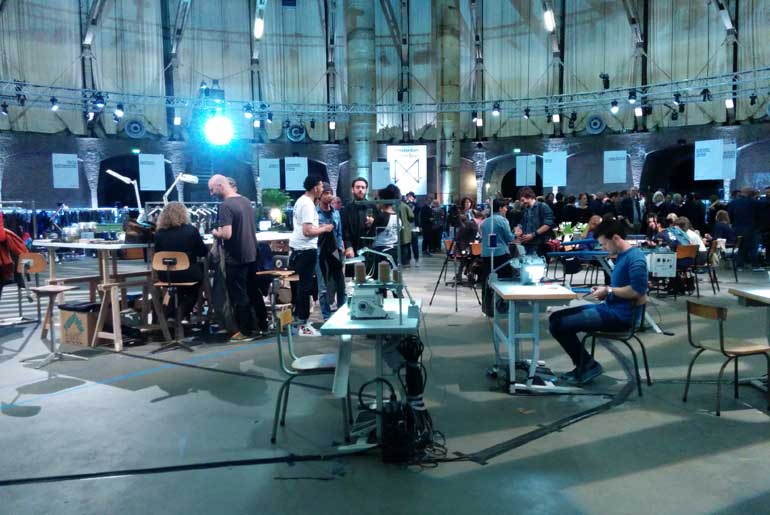
Since its humble kick off in an art gallery in 2004, Kingpins founder Andrew Olah has taken his trade show beyond New York City, traveling to Los Angeles, Hong Kong, and now Amsterdam. Each and every show follows Olah’s “less is more” vision of hand picking and presenting a small, but mighty, group of exhibitors involved in denim and sportswear manufacturing. This includes fabric mills, manufacturers, wash houses, and other treatment organizations.
For its Amsterdam debut, the center of the oval-shaped room was reserved for repair stations and meeting spaces, while the circumference was ringed with the whole gamut of international, upstream textile players. Unfortunately many didn’t offer a great amount of raw denim fabrics, but we did come across numerous fascinating denim materials that fell somewhere between the eccentric and the captivating.
Japanese mills, Toyoshima and Rainbow Textile, were two such manufacturers that caught our eye. Unlike their compatriot and fellow Kingpins vendor, Kurabo, who opted to not bring out any raw denim fabrics, Toyoshima and Rainbow pulled out all the stops for attendees.
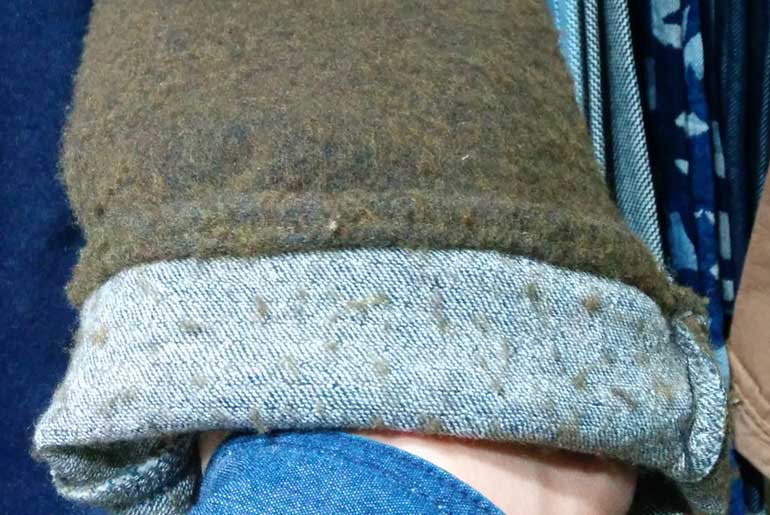
8.1 oz. thick, but not heavy, “Blanket Denim” composed of a cotton, wool, and nylon blend.
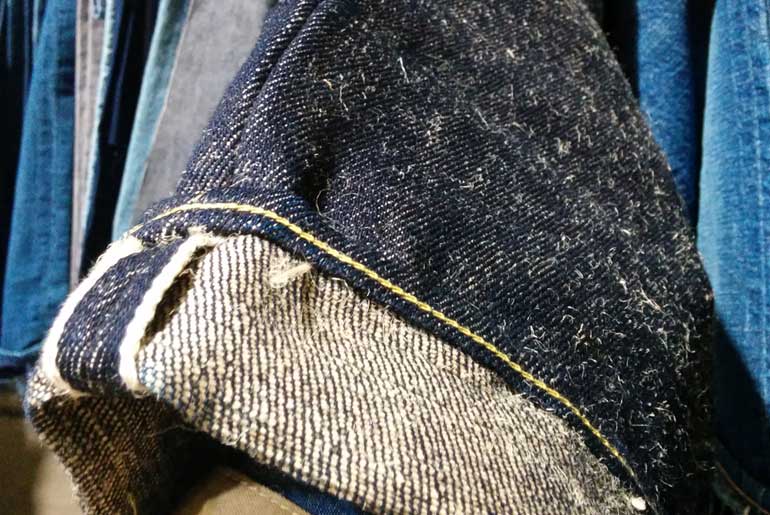
14 oz. hairy “Hibiscus Denim” composed of a cotton and kenaf blend.
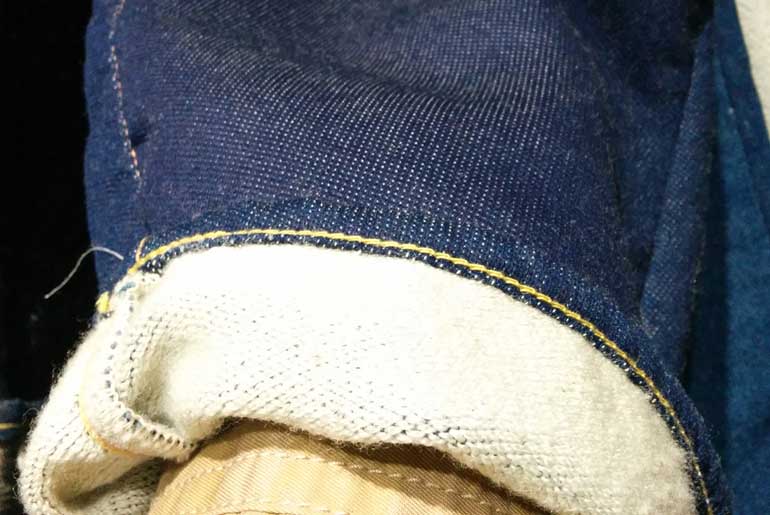
9.2 oz. cozy, indigo “Knit-like Denim” composed of a cotton and polyester blend.
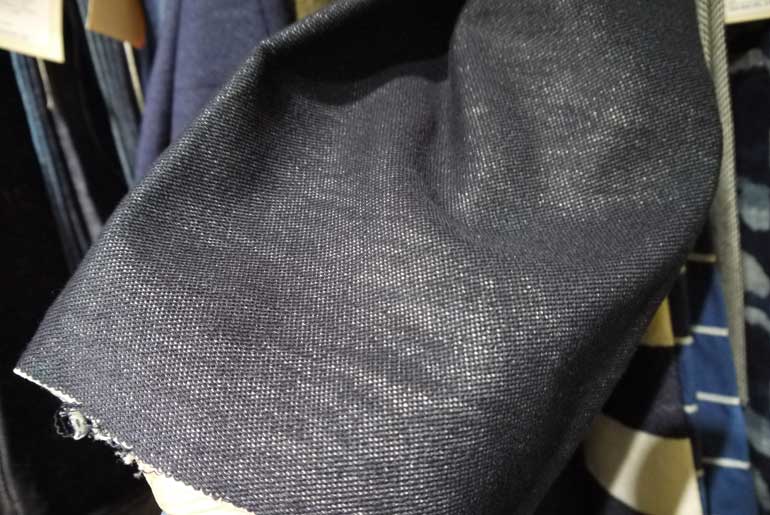
Ultralight 5.9 Oz. “Indigo Mat Weave” denim composed of 100% cotton.
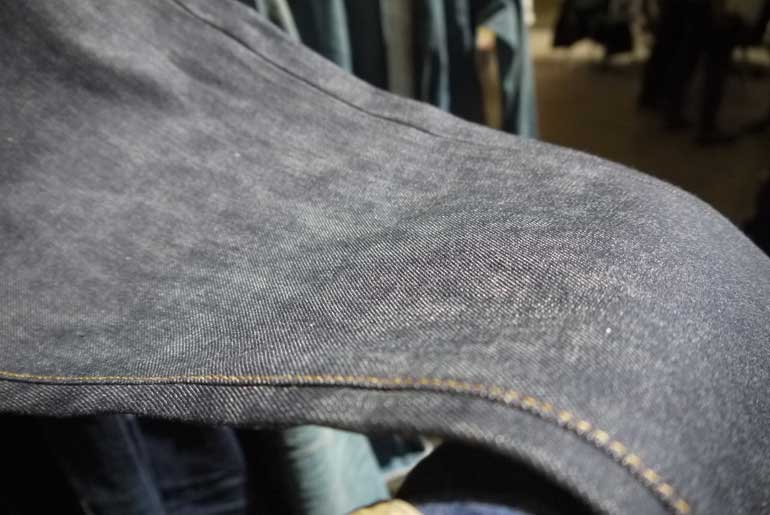
13.5 Oz. iridescent indigo denim. If you look closely you can see a slightly green sheen.
A few environmentally friendly denim alternatives were also presented at Kingpins, including a couple options from Royo Textile‘s eco-sustainable subsidiary, Denim Valley.
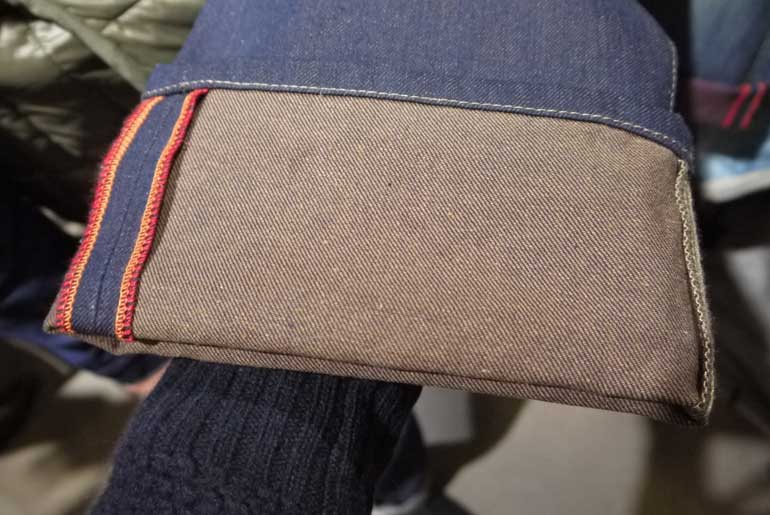
Organic denim produced with recycled polyester/cotton weft and lyocell/cotton warp.
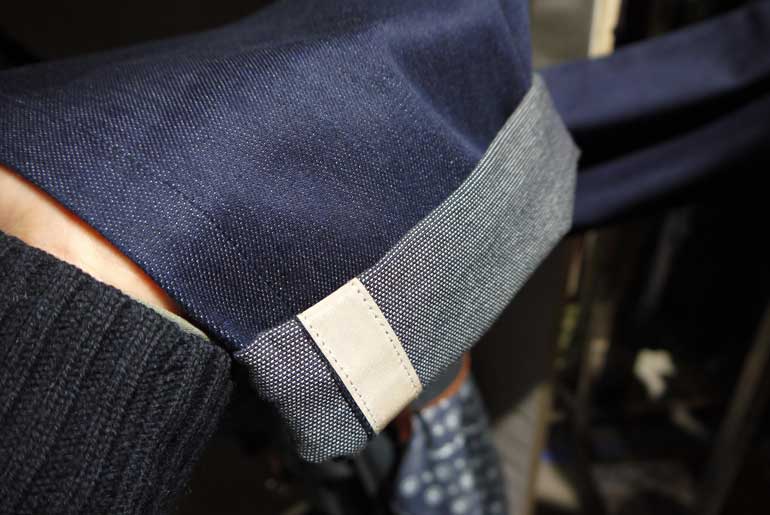
Another one of Denim Valley’s eco-friendly denims – this time produced with lyocell, plastic bottle scraps and organic cotton.
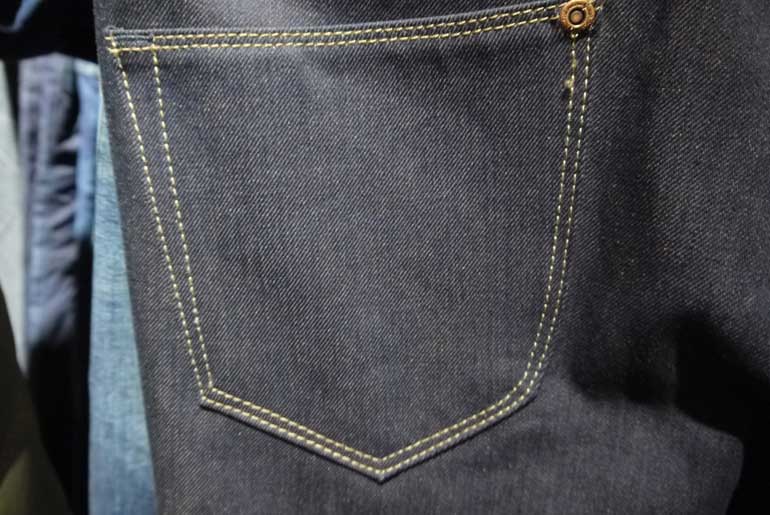
Denim Valley’s hybrid theme doesn’t end at the fabric either! The backside of their sample featured part Levi’s, part Lee back pockets.
Jean School
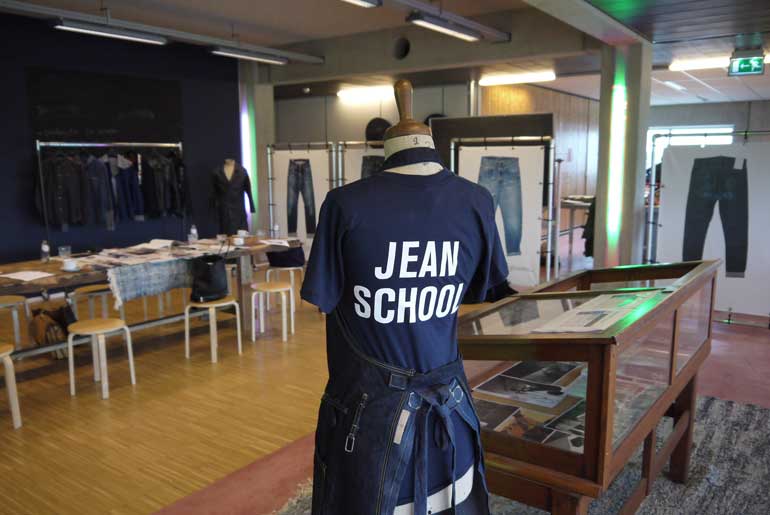
One the most remarkable elements of Denim Days – and Amsterdam’s growing denim scene in general – is how tightly integrated they were with the Jean School, a sister project from the House of Denim that kicked off in September 2012. Future denim diploma graduates could be found throughout the fair, helping run the daily events wherever needed, offering up free denim repairs, and showing off their wares.
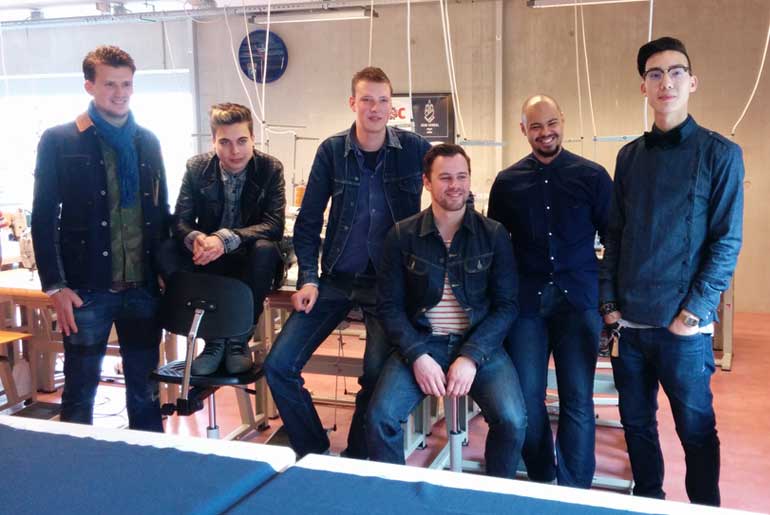
A few of the Jean School students.
Each year, twenty-five students commence the intensive three-year program. The curriculum is fairly straightforward – the first year requires students to gain foundational “solid basics” lessons supplemented with a retail project or internship at year-end; before going on to hone their craft with materials knowledge and construction techniques in the second year (supplemented with designing, sewing, and laundering their own pair of jeans).
The final year rounds out their experience with sourcing, buying and other specialization courses, as well as a company internship. Best of luck to next year’s graduates!
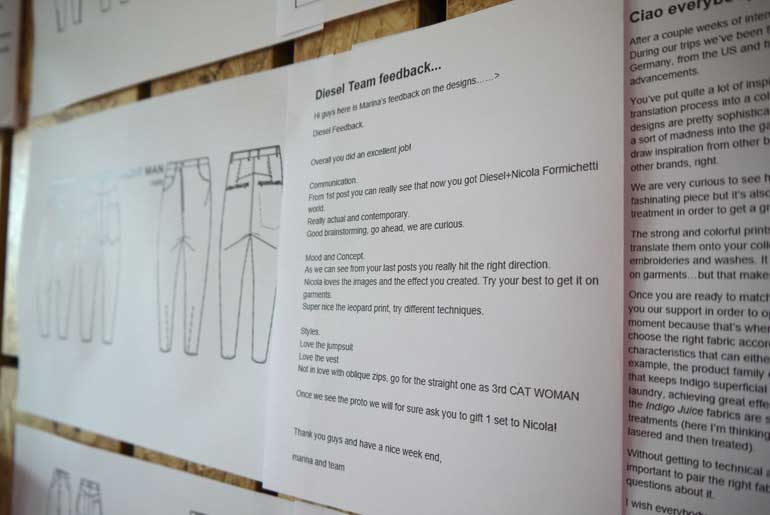
During our tour stop through the part-classroom, part-atelier school, we had the opportunity to chat with one of the program’s students, Mike van der Zanden and gain a sneak peek of his first prototype from his line, Dyemond Goods. The messenger bag is a combination of heavyweight 32 oz. selvedge denim, natural english bridle leather, and selvedge chambray fabric.
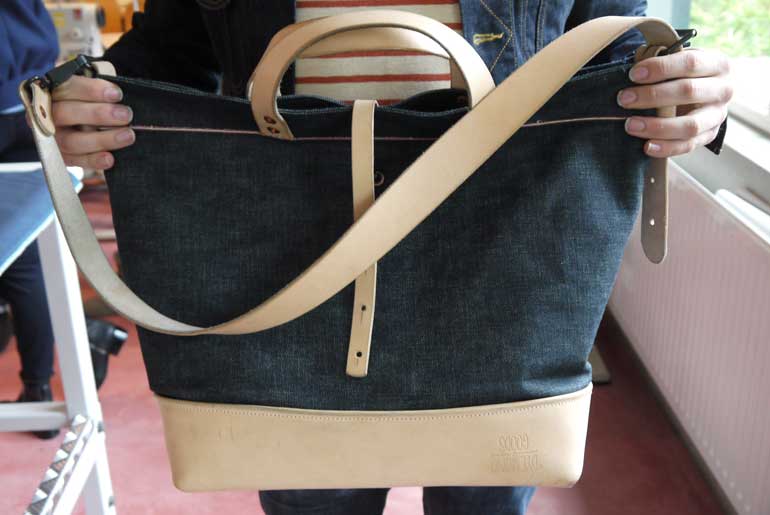
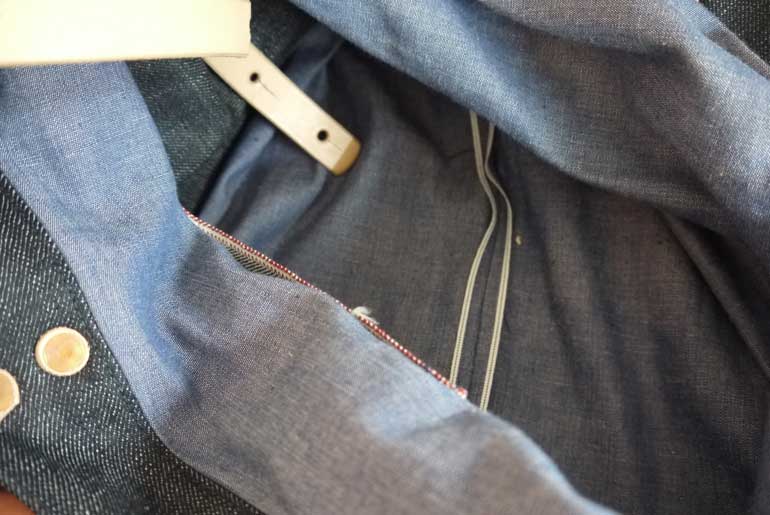
Be sure to come back tomorrow for Part II of our coverage on Amsterdam Denim Days, where we chronicle all the brands featured in the Blueprints show!
